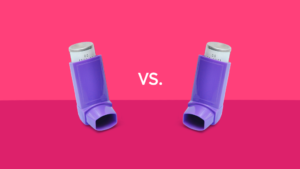What Is Kesimpta Used For? Ofatumumab Relapse Multiples Sclerosis Injection
HOME | DIABETES EDUCATION | WHAT IS KESIMPTA USED FOR? RELAPSE MULTIPLE SCLEROSIS INJECTION
Kesimpta is a medication used to treat active relapsing multiple sclerosis (MS). It targets and destroys B cells in the immune system, reducing inflammation and minimizing damage to myelin.
Administered through a subcutaneous injection once every four weeks using an injector pen, Kesimpta is more effective than teriflunomide in reducing relapses and slowing down disability progression. It is generally safe to use during pregnancy and breastfeeding, but consult your neurologist for personalized advice.
Key Takeaways: What Is Kesimpta Used For?
- Kesimpta is used as a treatment for active relapsing multiple sclerosis (MS).
- It targets and destroys B cells in the immune system, reducing inflammation and minimizing damage to myelin.
- Kesimpta is more effective than teriflunomide in reducing relapses and active lesions.
- It slows down disability progression by 32% to 34% at 3 to 6 months.
Used to Treat Active Relapsing MS
Kesimpta is used to treat active relapsing multiple sclerosis (MS). It targets and destroys B cells in the immune system, reducing myelin damage and inflammation. This helps control disease activity and prevents relapses. The treatment is self-administered using an injector pen at home. It takes less than a minute once every four weeks, allowing for minimal disruption to the daily routine.
Potential side effects of Kesimpta include headache, flushing, and skin reactions at the injection site. These effects are generally temporary and mild. Kesimpta can be used during pregnancy and breastfeeding, but it is important to consult with a neurologist.
Next, we will discuss Kesimpta’s effectiveness in reducing relapses and lesions.
Reduction of Relapses and Lesions
Kesimpta is a medication used to treat multiple sclerosis (MS). It reduces relapses and lesions by destroying B cells in the immune system. This reduces damage to myelin and decreases inflammation. Clinical trials have shown that Kesimpta is more effective than teriflunomide in reducing the rate of relapses and the number of active lesions on MRI scans.
Kesimpta reduces the annual rate of relapses by 51% to 58% and decreases the average number of Gd+ T1 lesions per MRI by 94% to 98%. It can also slow down disability progression by 32% to 34% at 3 to 6 months. Side effects may include headache, flushing, and skin reactions at the injection site. There is a risk of developing a brain infection, so consult with your healthcare provider before starting Kesimpta.
Slowing Disability Progression
Kesimpta is a medication used to treat certain forms of multiple sclerosis (MS). It has been shown to reduce disability progression by 34% at 3 months and 32% at 6 months. By targeting and destroying B cells in the immune system, Kesimpta helps reduce damage to myelin and inflammation, which can contribute to slowing disability progression. It is also more effective than teriflunomide in reducing relapses and active lesions.
Here are the benefits of Kesimpta in slowing disability progression:
- Reduced disability progression by 34% at 3 months and 32% at 6 months
- Reduced annual rate of relapses by 51% and 58%
- Decreased average number of Gd+ T1 lesions per MRI by 98% and 94%
- Helps individuals stay physically and mentally active
While using Kesimpta, it’s important to be aware of potential side effects, including headache, flushing, and skin reactions at the injection site. Serious side effects, although rare, should be reported to your healthcare provider immediately.
These can include a serious brain infection caused by a virus called Progressive Multifocal Leukoencephalopathy (PML), reactivation of hepatitis B virus (HBV), and serious liver problems. Your doctor may conduct blood tests to check for these conditions before you start treatment.
New findings showed that, after up to five years of total follow-up, the rate of confirmed disability worsening was lower among patients given continuous Kesimpta (17.7%), compared with those who first started on Aubagio (20.3%).
This meant that more than 80% of people who were always on Kesimpta and nearly 80% of those who switched had no reported worsening of disability over the duration of treatment. In the extension part alone, about 92% of patients in both groups experienced no confirmed disability worsening.
Self-Administered Subcutaneous Injection: Taking Kesimpta
When administering Kesimpta, follow the instructions provided by your healthcare provider. Use the Kesimpta Sensoready pens for self-administration. Inject the medication into the fatty layer just beneath the skin.
Possible Side Effects: Kesimpta may cause side effects such as headache, injection site reactions, and upper respiratory tract infections. If you experience any side effects, talk with your doctor.
Checking Your Blood Immunoglobulin Levels: Kesimpta can decrease blood immunoglobulin levels, increasing the risk of infections. Your doctor may want to check these levels before starting Kesimpta and periodically during treatment.
Vaccines: Complete any required vaccines at least 4 weeks before starting Kesimpta. Avoid live or live-attenuated vaccines during treatment.
Birth Control Method: If you are a woman of childbearing potential, discuss effective birth control methods with your doctor while taking Kesimpta.
Follow the instructions given by your healthcare provider for self-administering Kesimpta. Report any concerns or side effects to your doctor.
Clinical Superiority Over Teriflunomide
Kesimpta has shown clinical superiority over Teriflunomide in reducing relapses and active lesions in patients with relapsing multiple sclerosis. Clinical studies have demonstrated that Kesimpta is more effective than Teriflunomide in reducing the rate of relapses and slowing down disability progression. Kesimpta reduced the annual rate of relapses by 51% and 58% compared to Teriflunomide.
It also significantly decreased the average number of Gd+ T1 lesions per MRI by 98% and 94%. In terms of disability progression, Kesimpta showed reductions of 34% at 3 months and 32% at 6 months. Patients using Kesimpta reported benefits such as reduced relapses, delayed disability progression, and the convenience of a once-monthly administration that takes less than 1 minute.
These findings highlight the effective impact of Kesimpta in managing relapsing multiple sclerosis and improving neurologic signs. It is important to consider the potential side effects of Kesimpta as we explore it further.
Kesimpta Side Effects
Common Side Effects:
- Headache
- Flushing
- Skin reactions at the injection site, such as pain, itching, redness, and swelling
- Infections, such as urinary tract infections and upper respiratory infections
Serious Side Effects:
- Reactivation of the hepatitis B virus (HBV), leading to symptoms like diarrhea, abdominal pain, and jaundice
- Low levels of certain immunoglobulins
- Serious infections, including progressive multifocal leukoencephalopathy (PML)
- Allergic reactions, ranging from mild skin rash to severe swelling and trouble breathing
If you experience severe allergic reactions or worsening tiredness or yellowing of your skin or eyes, seek immediate medical attention. Discuss with your doctor if you plan to take medicines that weaken the immune system or if you’re using birth control. Avoid breastfeeding while taking Kesimpta. Report any side effects to your healthcare provider and seek medical attention for any serious side effects or symptoms of infection while using Kesimpta.
Safe Use of Kesimpta During Pregnancy and Breastfeeding
Safe Use of Kesimpta During Pregnancy and Breastfeeding
If you are pregnant or breastfeeding, discuss the safe use of Kesimpta with your healthcare provider. The effects of Kesimpta on pregnancy and breastfeeding are unknown, so consult with your doctor before starting or continuing treatment. Your doctor will weigh the risks and benefits to you and your baby to make an informed decision.
Key points to consider:
- Pregnancy: The potential harm of Kesimpta to unborn babies is unknown. Discuss individual cases with a healthcare professional. Use contraception during and after Kesimpta treatment.
- Breastfeeding: The safety of Kesimpta during breastfeeding is uncertain. Discuss the best feeding method with a healthcare professional.
- Vaccinations: If Kesimpta was used during pregnancy, consult with a healthcare professional about vaccinations for babies.
Note that your situation is unique, so your doctor will provide guidance based on your specific circumstances. By discussing the safe use of Kesimpta during pregnancy and breastfeeding with your healthcare provider, you can make an informed decision that prioritizes your health and your baby’s well-being.
Now, let’s explore the effectiveness of Kesimpta for MS treatment and its impact on symptoms of MS.
Effectiveness for MS Treatment and Symptoms of MS
One common question people have is how effective Kesimpta is for the treatment of multiple sclerosis (MS). Kesimpta has been proven to be effective in reducing the rate of relapses and slowing down disability progression in individuals with active relapsing MS. Here are some key points about the effectiveness of Kesimpta for MS treatment and managing symptoms:
Reduction in Relapses: Kesimpta can significantly reduce the annual rate of relapses by 51% at 3 months and 58% at 6 months according to clinical studies. This means that individuals who take Kesimpta are less likely to experience frequent relapses, which can be debilitating and impact their quality of life.
Slowing Disability Progression: Kesimpta has been shown to slow down disability progression in people with MS. It reduces the average number of Gd+ T1 lesions per MRI by 98% and 94%, indicating that it can help protect the nervous system and delay the onset of disability.
It is important to note that while Kesimpta is effective, it may not be suitable for everyone. Individuals with an active hepatitis B virus infection should not take Kesimpta. Additionally, like any medication, Kesimpta can have mild or serious side effects. It is essential to discuss the potential benefits and risks with a healthcare professional before starting Kesimpta treatment.
Dosage and Administration
Dosage and Administration
Kesimpta for the treatment of multiple sclerosis should be taken as directed by your doctor. They will determine the appropriate dosage and may teach you how to self-administer the medication at home.
Kesimpta is available as a liquid solution in single-dose prefilled syringes or injection pens. Follow the detailed Instructions for Use provided with Kesimpta for preparation and injection guidance.
Here is a summary of important information about using Kesimpta:
- Dosage: Determined by your doctor
- Administration: Self-administered through subcutaneous injection
- Frequency: Once every four weeks
- Form: Liquid solution in single-dose prefilled syringes or injection pens
- Preparation and Injection: Follow the detailed Instructions for Use provided with Kesimpta
It is important to discuss your overall health, medical conditions, and any potential medication interactions with your doctor before taking Kesimpta.
Kesimpta can be used during pregnancy and breastfeeding, but individual cases should be discussed with a neurologist. If you are planning on getting pregnant, it is recommended to stop using Kesimpta at least 3 months before trying to conceive. Inform your doctor about any prescription drugs, over-the-counter medications, or potential drug interactions before using Kesimpta.
Interactions and Precautions of Using Kesimpta (Ofatumumab)
Interactions with other medicines: Inform your healthcare professional about all medications you are taking, including prescription, over-the-counter, vitamins, and herbal supplements. Some medicines may affect the way Kesimpta works or increase the risk of side effects. Your healthcare professional can guide you on the safe use of Kesimpta alongside other medications.
Precautions during pregnancy: Discuss the use of Kesimpta with your healthcare professional if you are pregnant or planning to become pregnant. While Kesimpta can be used during pregnancy, it is important to consider the potential risks and benefits. Your healthcare professional can guide the best course of action to manage your condition while minimizing any potential harm to the unborn baby.
Precautions during breastfeeding: Discuss the use of Kesimpta with your healthcare professional if you are breastfeeding or planning to breastfeed. While Kesimpta can be used during breastfeeding, it is important to consider the potential risks and benefits. Your healthcare professional can guide the best course of action to manage your condition while ensuring the safety of your baby.
Frequently Asked Questions About Kesimpta Use in Multiple Sclerosis
What Disease Does KESIMPTA Treat?
Kesimpta treats multiple sclerosis (MS). It’s used for active relapsing MS, when you recently had a relapse or new lesions on MRI scans. Kesimpta targets and destroys B cells, reducing damage to myelin and inflammation.
Is KESIMPTA a Chemotherapy Drug?
No, Kesimpta is not a chemotherapy drug. It is a biologic medication used to treat relapsing multiple sclerosis (MS). It works by decreasing B-cells, slowing down disease progression and reducing relapse rates.
What Is KESIMPTA Approved For?
Kesimpta is approved for treating specific forms of relapsing multiple sclerosis (MS), including clinically isolated syndrome (CIS), relapsing-remitting MS (RRMS), and active secondary-progressive MS (SPMS). It helps reduce relapses, slow down disability progression, and decrease active lesions on MRI scans.
How Much Does KESIMPTA Cost per Year?
Kesimpta costs vary based on insurance and location. Getting a 90-day supply can lower costs and reduce trips to the pharmacy. Prior authorization may be needed. Novartis offers support to lower costs for eligible individuals.



